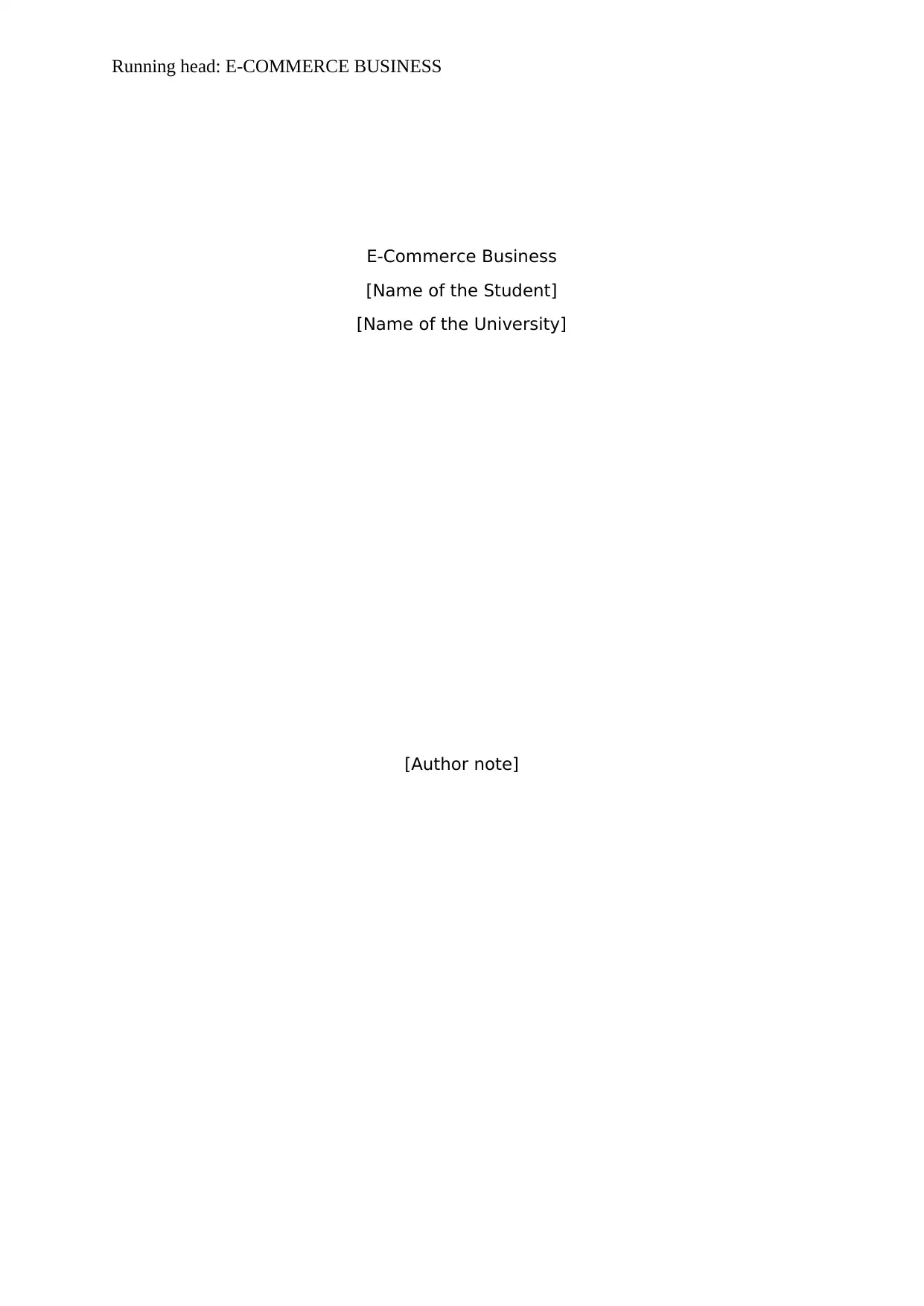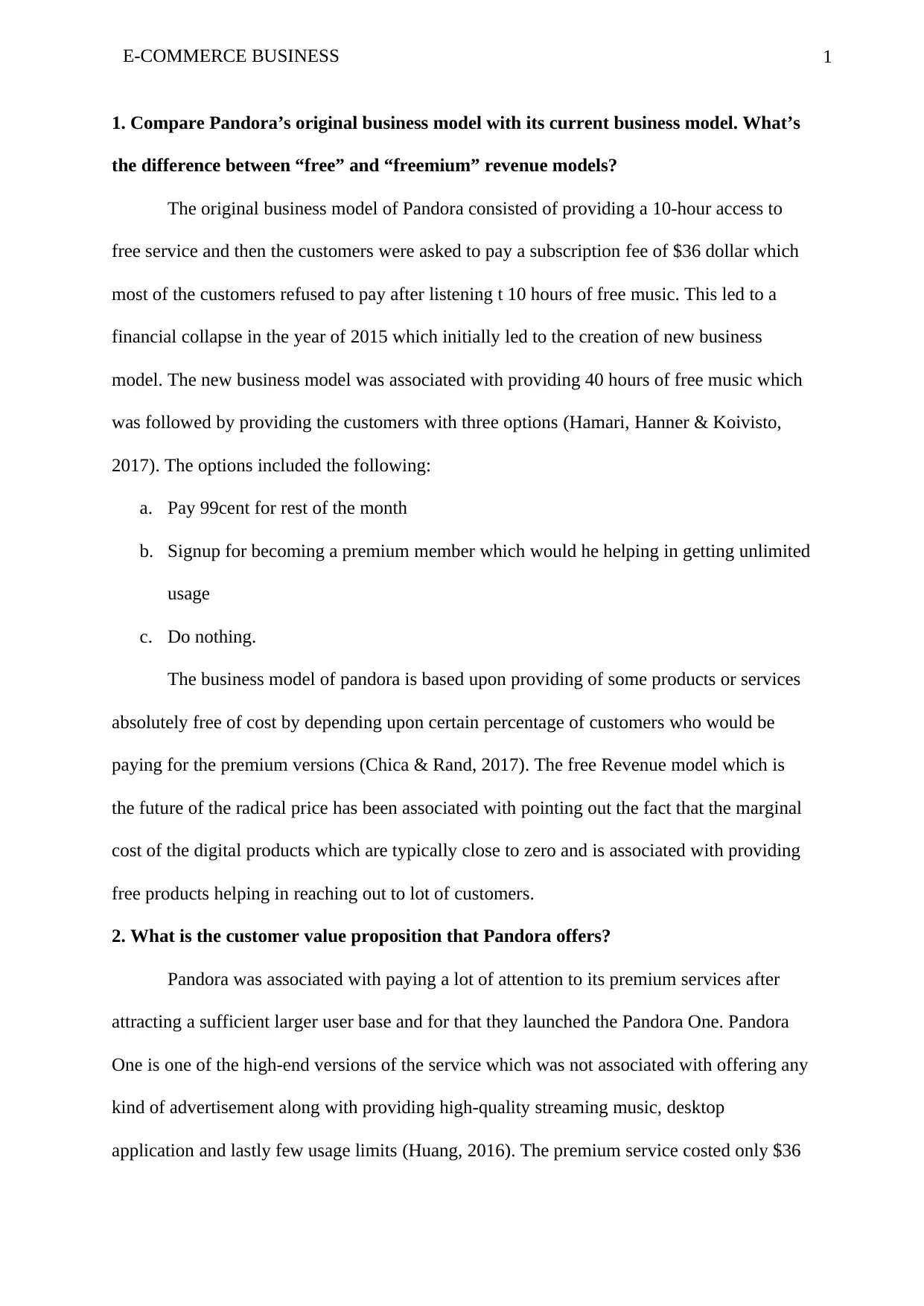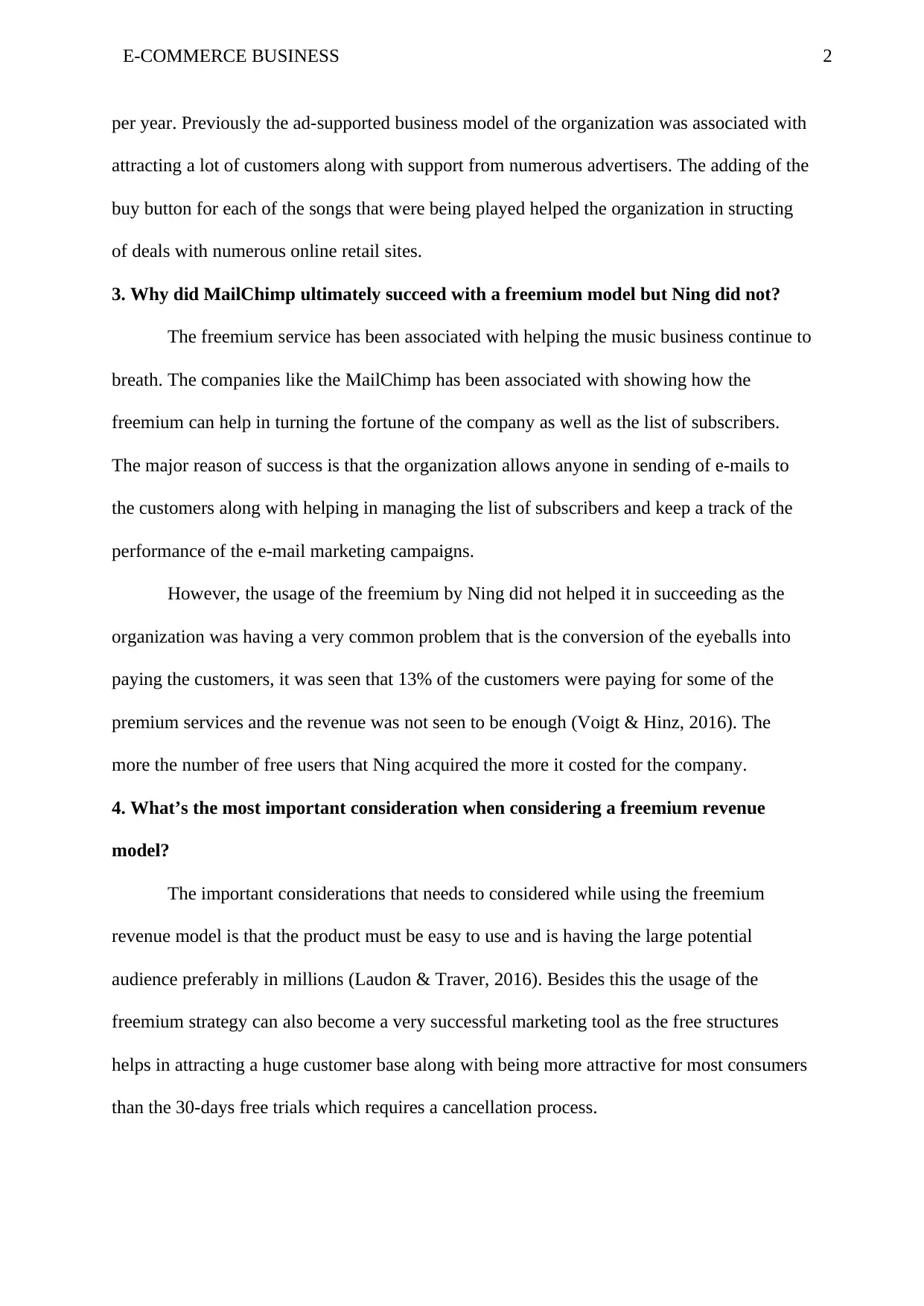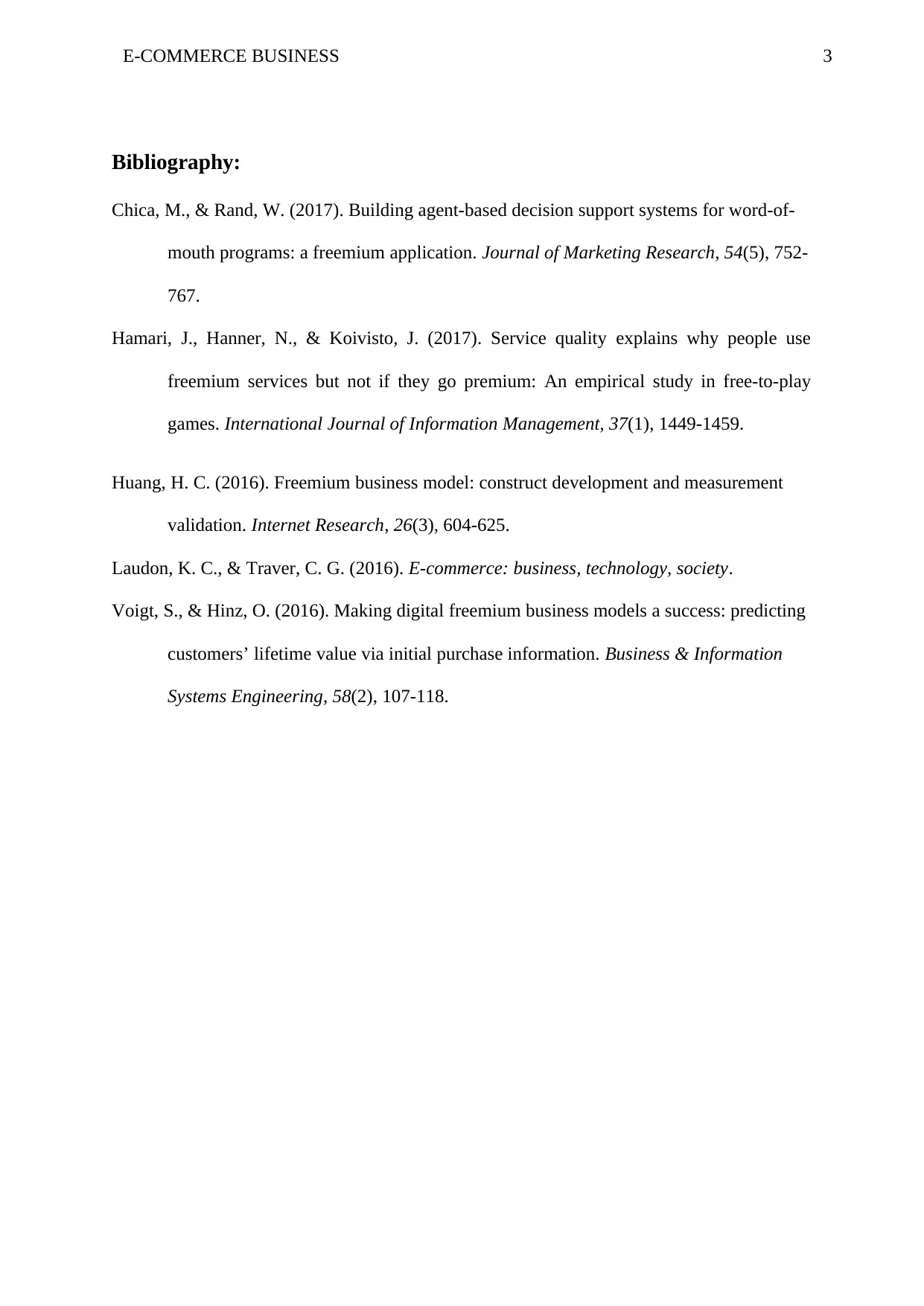Pandora's E-Commerce Success: A Case Study of the Freemium Model
VerifiedAdded on 2023/04/23
|4
|909
|324
Case Study
AI Summary
This assignment provides a comprehensive analysis of Pandora's business model, contrasting its original approach with its current freemium strategy. It delves into the differences between 'free' and 'freemium' revenue models, highlighting how Pandora initially struggled with a limited free service before transitioning to a more successful model offering extended free access with options for premium upgrades. The case study examines Pandora's customer value proposition, emphasizing the appeal of ad-free, high-quality streaming through Pandora One. Furthermore, it contrasts MailChimp's success with the freemium model against Ning's struggles, attributing the difference to conversion rates and cost management. The assignment concludes by outlining the key considerations for implementing a freemium revenue model, such as ease of use and a large potential audience. This document is available on Desklib, a platform offering a wide range of study tools and solved assignments for students.
1 out of 4







![[object Object]](/_next/static/media/star-bottom.7253800d.svg)